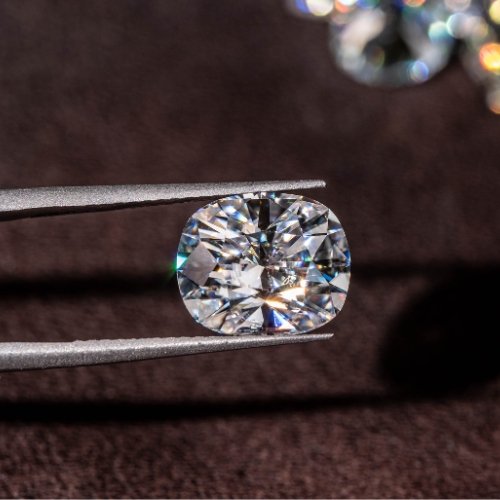Diamond
About
Diamond is one of the most sought-after gemstones and the hardest known natural material on Earth, consisting entirely of carbon atoms arranged in a cubic crystal structure. Diamonds are formed deep within the Earth under intense heat and pressure and are brought to the surface through volcanic activity. While they are renowned for their clarity and brilliance, diamonds can also occur in a variety of colours, such as yellow, pink, blue, and green. Major sources include South Africa, Russia, Canada, and Australia.
Birthstones & Anniversaries
Diamond is the birthstone for April and is traditionally given for the 10th, 60th, and 75th anniversaries, symbolising eternal love, strength, and resilience.
Crystal Healing Energy
The overarching theme of diamond is clarity and strength. Known for its purifying and amplifying qualities, diamond is often associated with mental clarity, spiritual awakening, and enhancing one’s energy. In crystal healing, diamond is believed to bring courage, align thoughts with intentions, and help release negative patterns. Its intense energy can also amplify the effects of other stones, making it a powerful addition to spiritual work.
Facts
Hardest Natural Material: With a Mohs hardness of 10, diamond is the hardest natural substance, suitable for daily wear and demanding industrial applications.
Brilliance and Fire: Diamonds are known for their unique optical properties, including high dispersion, which creates the “fire” effect – a rainbow-like sparkle.
Historical Significance: Diamonds have been revered for thousands of years, symbolising power, wealth, and eternal love across cultures.
Global Deposits: Major diamond sources include South Africa, Russia, Botswana, and Canada, each producing diamonds with distinct characteristics.
Industrial Uses: Beyond jewellery, diamonds are used in drilling, cutting, and grinding tools due to their unmatched hardness and durability.
Science
Mineral: Diamond
Crystal System: Cubic
Chemistry: C (carbon)
Colour: Typically colourless but can be yellow, brown, pink, blue, green, and other colours
Refractive Index: 2.417 to 2.419
Specific Gravity: 3.52
Mohs Hardness: 10
TreatmentsDiamonds may undergo various treatments to enhance their clarity and colour. Common treatments include laser drilling to remove inclusions, fracture filling, and high-pressure high-temperature (HPHT) treatment to alter or intensify colour. Some diamonds are also irradiated to produce fancy colours, especially green, blue, and yellow.
SyntheticsSynthetic diamonds are widely produced for both industrial and gem-quality purposes, primarily through High-Pressure High-Temperature (HPHT) and Chemical Vapour Deposition (CVD) methods. Lab-grown diamonds have the same physical and chemical properties as natural diamonds and are often used in jewellery.
ImitationsCommon diamond imitations include cubic zirconia, moissanite, and white sapphire. These materials can mimic the appearance of diamond but lack its hardness, brilliance, and unique refractive properties.
similar materialsSynthetic Moissanite: Known for its similar sparkle, synthetic moissanite is a popular diamond alternative, though it exhibits double refraction.
Cubic Zirconia: A common diamond simulant, cubic zirconia is softer and has a lower refractive index than diamond.
Sapphire: A natural gemstone sometimes used as a diamond alternative, though it has a different crystal structure and lacks diamond’s fire.
Diamond Gallery

Rough diamonds

Diamond sorting

Octahedral crystal

Rough maccle

Polished diamond
Why We love Diamond
timelessDiamonds’ brilliance, fire, and durability make them a timeless choice for jewellery and special occasions.
RarityFancy coloured diamonds, like blue and pink, add an extra layer of rarity and fascination.
Symbol of loveKnown as the ultimate symbol of commitment, diamonds are deeply meaningful in engagements and anniversaries.



